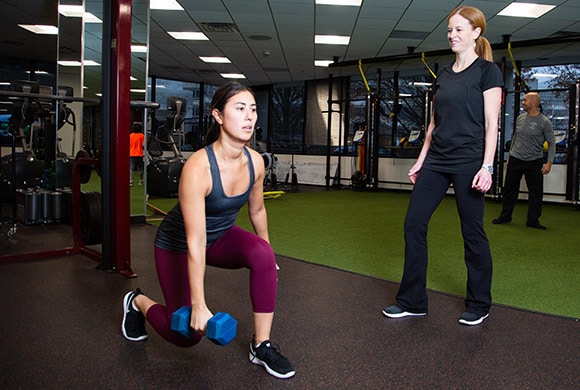What is Functional Training?

Over the past decade progressive fitness professionals have embraced the idea of “functional training.” As we continue to try to refine and expand our understanding of this idea, or philosophy, or objective and especially as we incorporate “functional training” into our own workouts and the programs we develop for our clients, our understanding, as well as our definition and description of functional training, becomes more complex.
At a basic level, functional training can be defined as training that helps improve function. Function, in this broad context, usually meaning the body’s most natural, effective, efficient way to work, to move or to perform physical tasks, or in other words, the way the body was designed, intended, or architected to physically function.
Initially “function” was viewed from a broad or big picture perspective, with gross motor movements such as walking, running, sitting, standing, pulling, pushing, turning, rotating, etc. in mind. With these fundamental gross movements in mind, we began to identify and describe exercises that we believed are more functional in nature and ones that are less functional in nature. The more functional exercises we often characterized as exercises that are “multi-joint,” “multi-planer,” “ground based,” and “self-stabilized,” further defined as follows:
Multi-Joint exercises are exercises that heavily involve more than one joint. A squat, jump or lunge in contrast to many common machine exercises that may also target some of the same muscles and joints, such as the Leg Extension, Leg Curl, Seated Abductor or Adductor machine.
Multi-Planer exercises are exercises that either involve movements through different planes of motion, or that resist forces that would otherwise cause movement through different planes of motion.
Ground-Based exercises are exercises that are generally performed standing, and thus requiring a degree of balance, proprioception and self-stabilization.
Self-Stabilized exercises are exercises that require the body to stabilize itself or to stabilize specific regions or joints, during the execution of the exercise.
However, many fitness professionals are now programming exercises intended to promote or improve the function of a specific body region, muscle or joint. For example, we may have our clients stand on a Baps Board and isolate various ankle movements (dorsiflexion, plantar flexion, inversion, eversion, circumduction), or we might include various isometric planking type exercises, which are not performed standing, may not include multi-planer (or even any) movement, but we would still argue that these exercise fall under the umbrella of functional training.
So “functional training” is not so easy to define, and different exercises can fall somewhere along a spectrum from being less to more functional in nature. A six week training program of seated leg press may help an elderly person improve his ability to get up and down from a chair. Therefore, one might argue that the leg press is a functional exercise. However, a six week program of body weight, or even assisted squats, may result in even greater improvement in the client’s ability to get up and down from a chair. Therefore, maybe the leg press (not ground-based, not significantly self-stabilized, and not multi-planer) is at the lower end of the “functional” spectrum whereas the squat is at the higher end of the spectrum.
At 1TO1 FITNESS, our trainers always aim to help our clients achieve their health, fitness, aesthetic, and athletic goals, while always trying to improve function.
